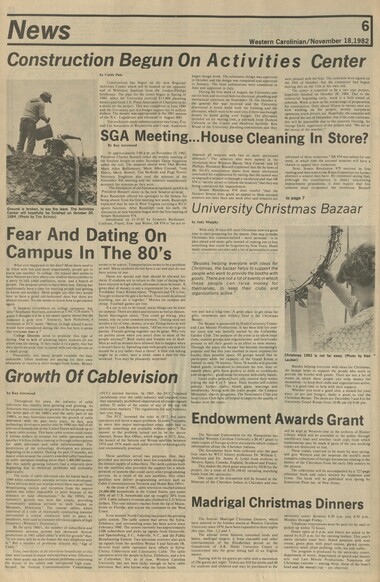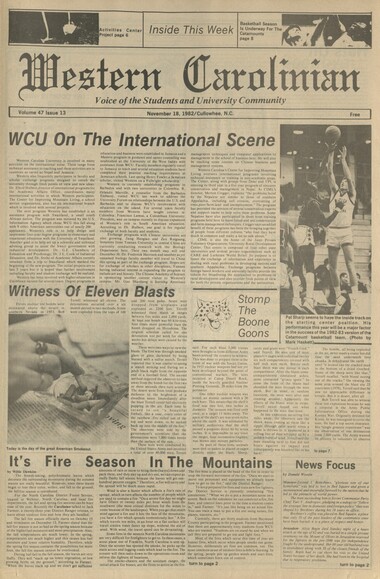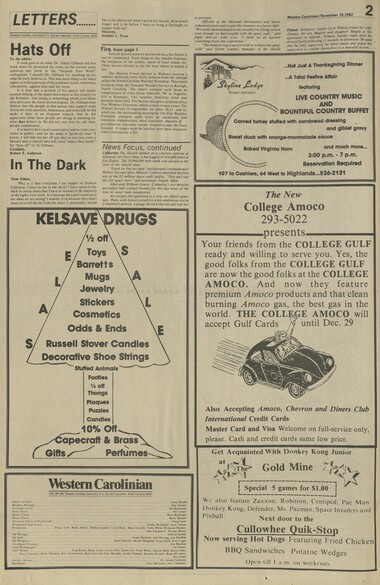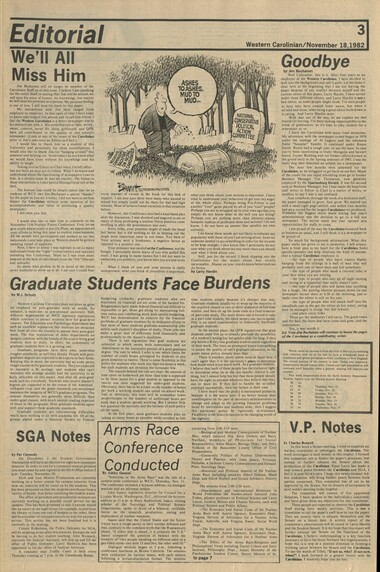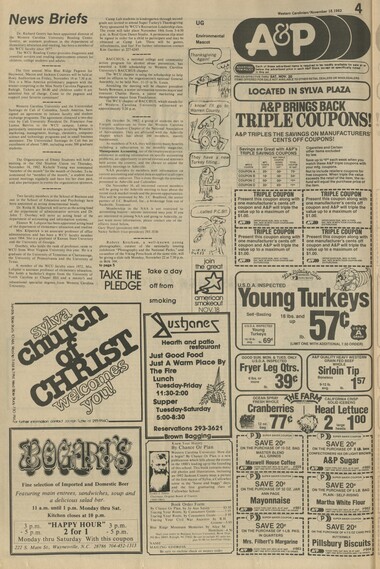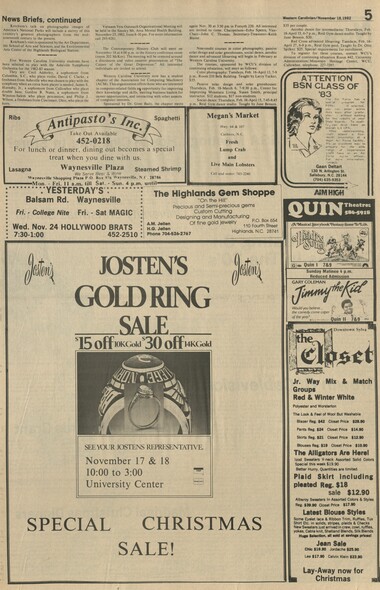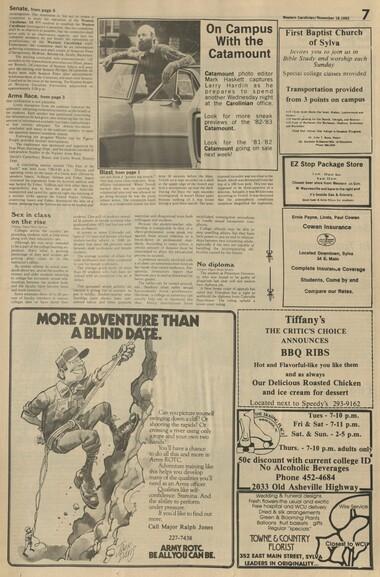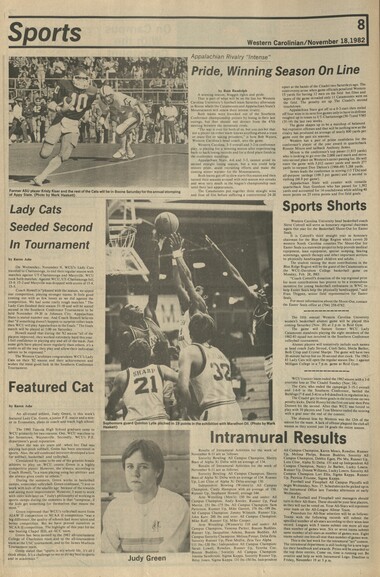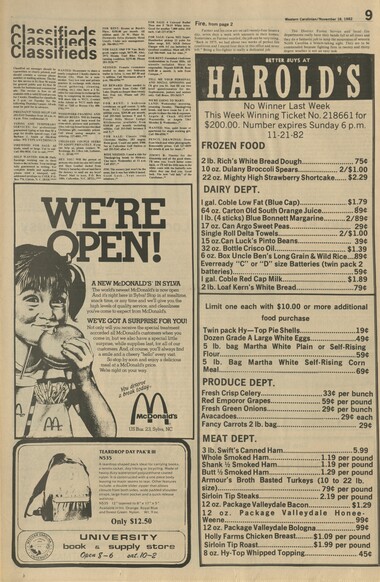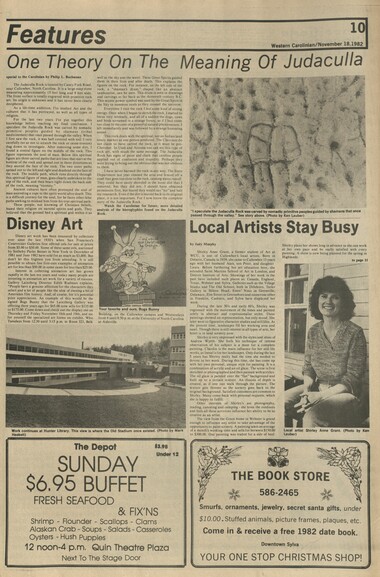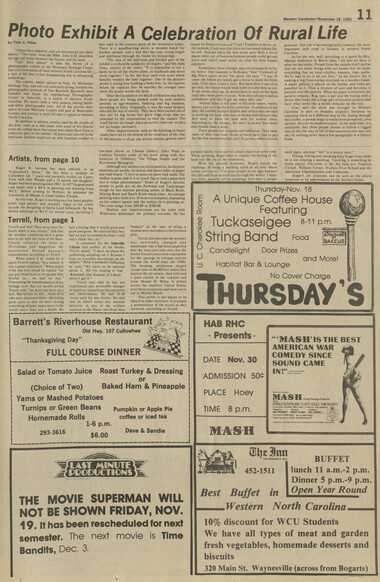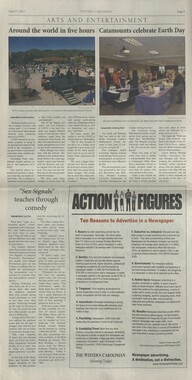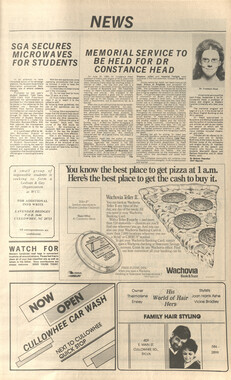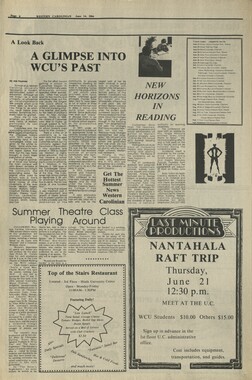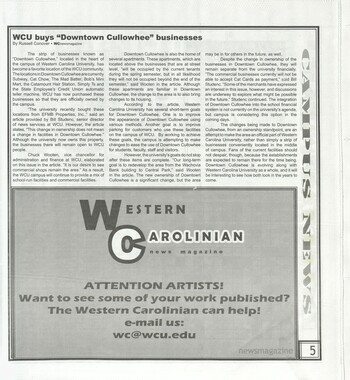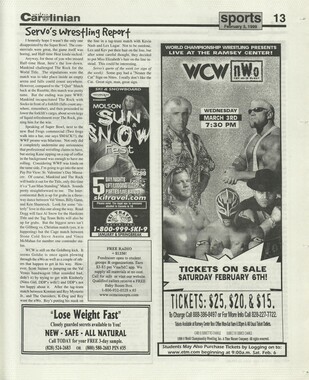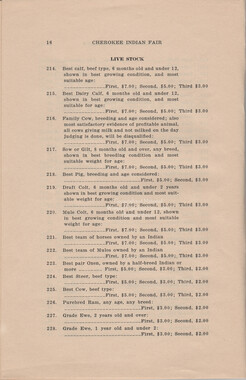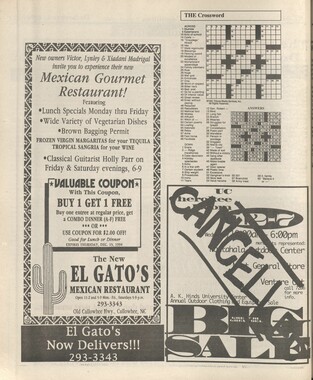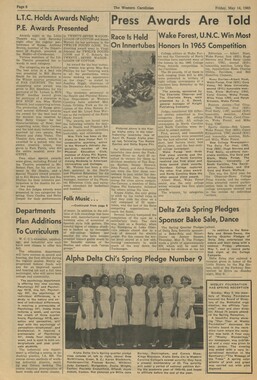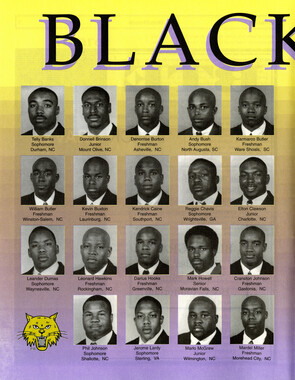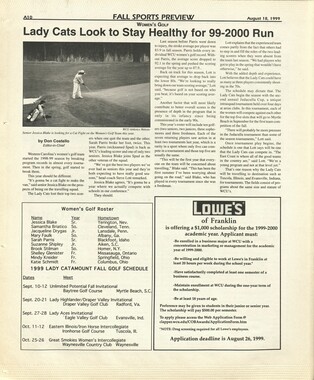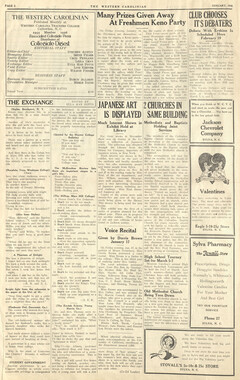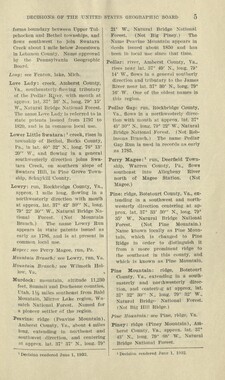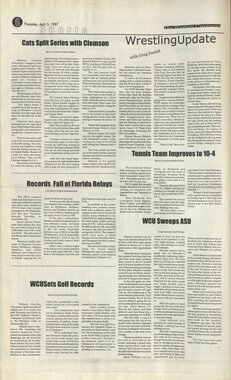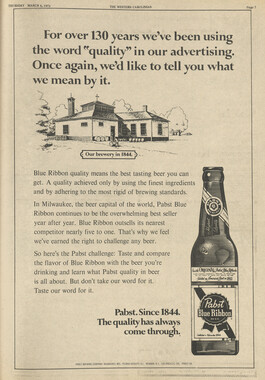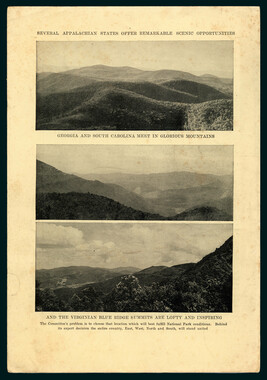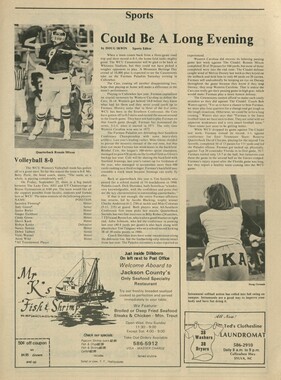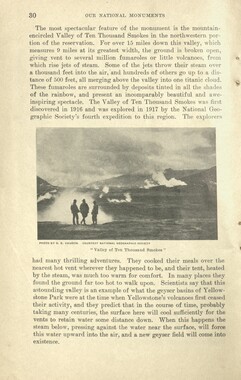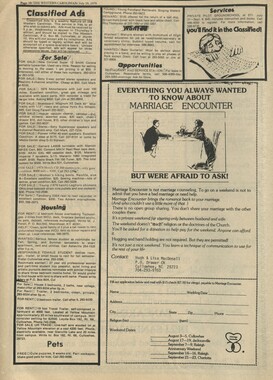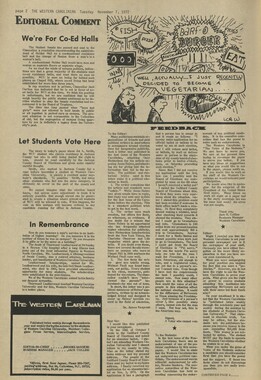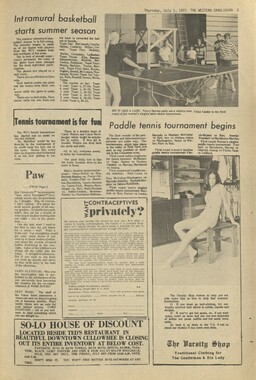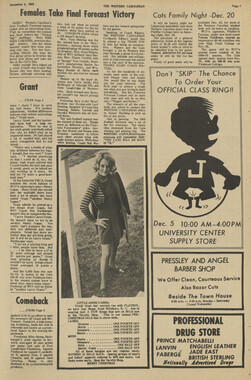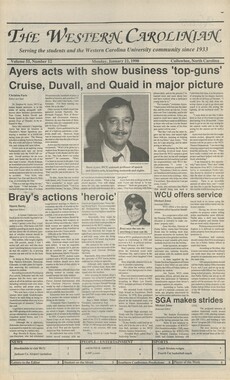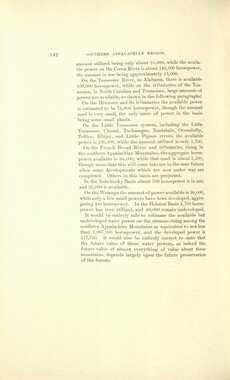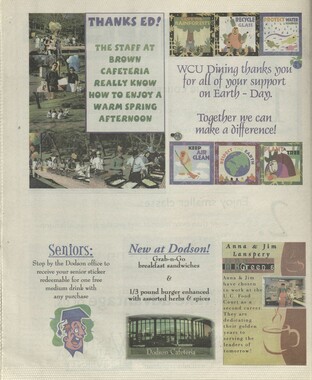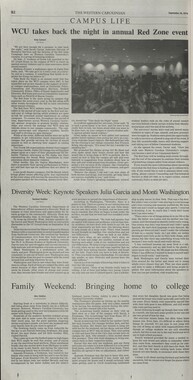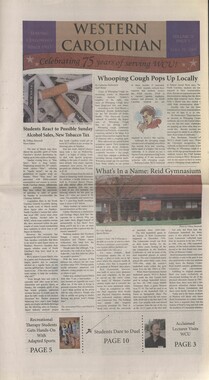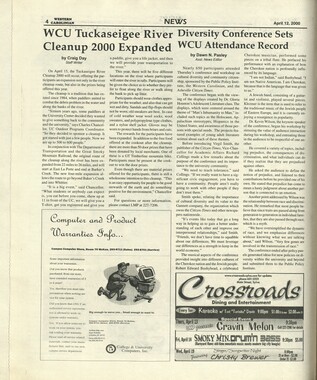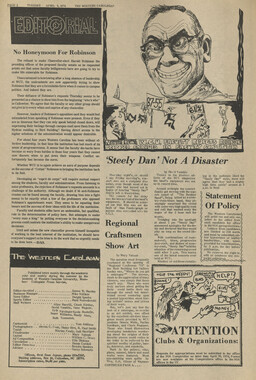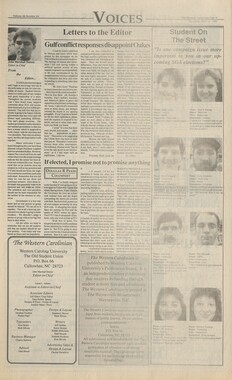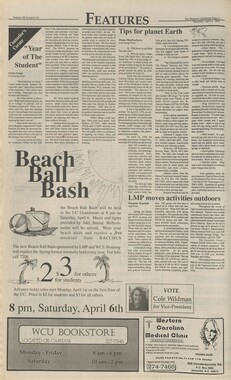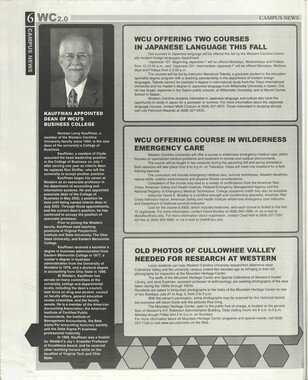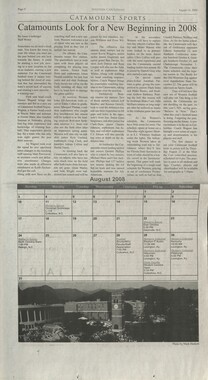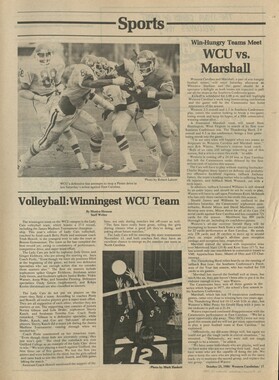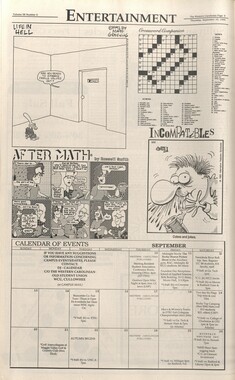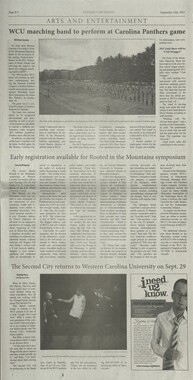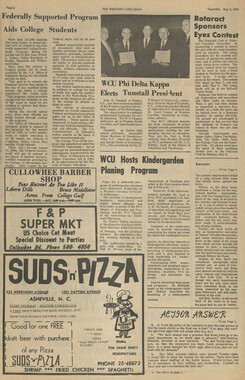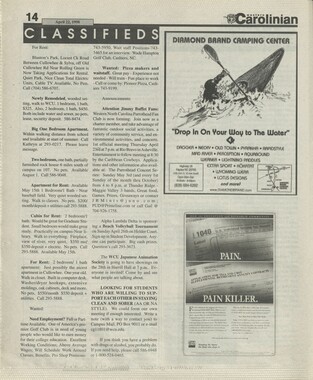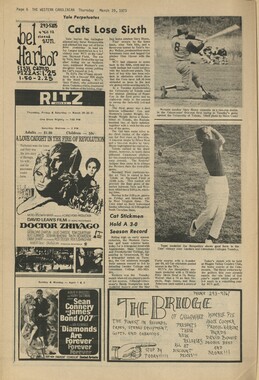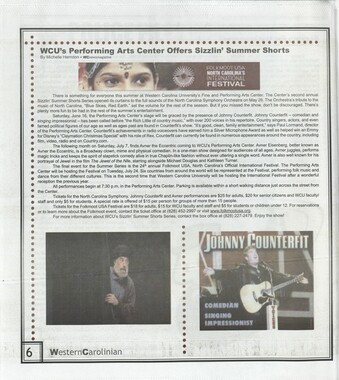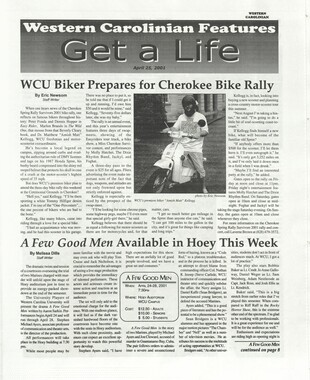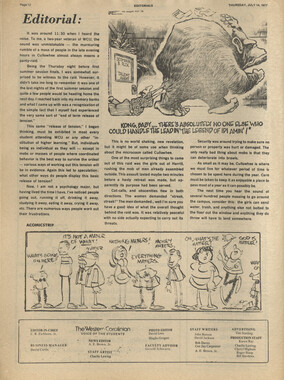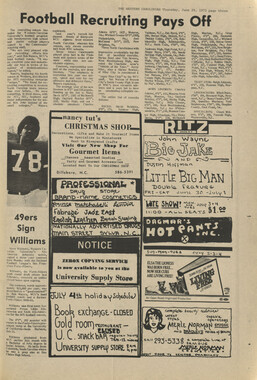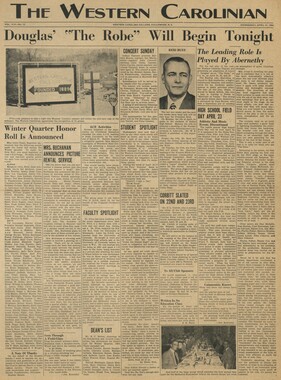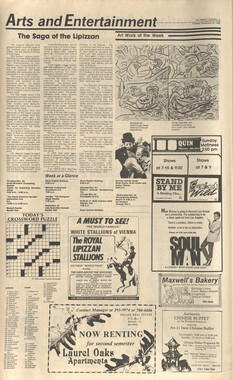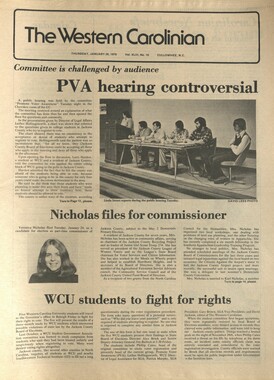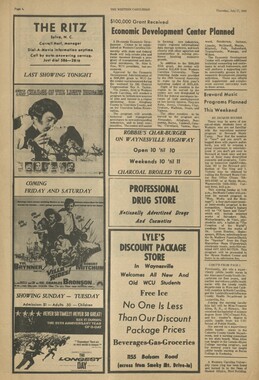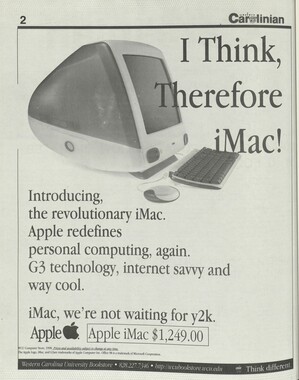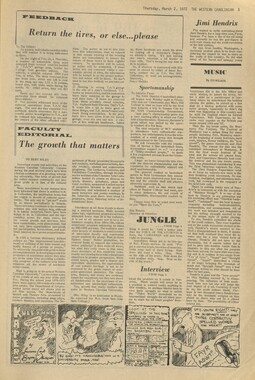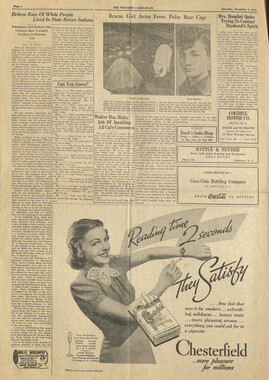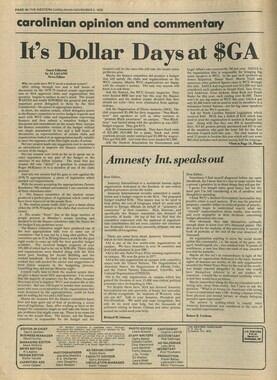Western Carolina University (21)
View all
- Canton Champion Fibre Company (2308)
- Cherokee Traditions (291)
- Civil War in Southern Appalachia (165)
- Craft Revival (1942)
- George Masa Collection (137)
- Great Smoky Mountains - A Park for America (3182)
- Highlights from Western Carolina University (422)
- Horace Kephart (998)
- Journeys Through Jackson (159)
- LGBTQIA+ Archive of Jackson County (90)
- Oral Histories of Western North Carolina (318)
- Picturing Appalachia (6617)
- Stories of Mountain Folk (413)
- Travel Western North Carolina (153)
- Western Carolina University Fine Art Museum Vitreograph Collection (129)
- Western Carolina University Herbarium (92)
- Western Carolina University: Making Memories (738)
- Western Carolina University Publications (2491)
- Western Carolina University Restricted Electronic Theses and Dissertations (146)
- Western North Carolina Regional Maps (71)
- World War II in Southern Appalachia (131)
University of North Carolina Asheville (6)
View all
- Allanstand Cottage Industries (62)
- Appalachian National Park Association (53)
- Bennett, Kelly, 1890-1974 (1463)
- Berry, Walter (76)
- Brasstown Carvers (40)
- Carver, George Washington, 1864?-1943 (26)
- Cathey, Joseph, 1803-1874 (1)
- Champion Fibre Company (233)
- Champion Paper and Fibre Company (297)
- Cherokee Indian Fair Association (16)
- Cherokee Language Program (22)
- Crowe, Amanda (40)
- Edmonston, Thomas Benton, 1842-1907 (7)
- Ensley, A. L. (Abraham Lincoln), 1865-1948 (275)
- Fromer, Irving Rhodes, 1913-1994 (70)
- George Butz (BFS 1907) (46)
- Goodrich, Frances Louisa (120)
- Grant, George Alexander, 1891-1964 (96)
- Heard, Marian Gladys (60)
- Kephart, Calvin, 1883-1969 (15)
- Kephart, Horace, 1862-1931 (313)
- Kephart, Laura, 1862-1954 (91)
- Laney, Gideon Thomas, 1889-1976 (439)
- Masa, George, 1881-1933 (61)
- McElhinney, William Julian, 1896-1953 (44)
- Niggli, Josephina, 1910-1983 (10)
- North Carolina Park Commission (105)
- Osborne, Kezia Stradley (9)
- Owens, Samuel Robert, 1918-1995 (11)
- Penland Weavers and Potters (36)
- Roberts, Vivienne (15)
- Roth, Albert, 1890-1974 (142)
- Schenck, Carl Alwin, 1868-1955 (1)
- Sherrill's Photography Studio (2565)
- Southern Highland Handicraft Guild (127)
- Southern Highlanders, Inc. (71)
- Stalcup, Jesse Bryson (46)
- Stearns, I. K. (213)
- Thompson, James Edward, 1880-1976 (226)
- United States. Indian Arts and Crafts Board (130)
- USFS (683)
- Vance, Zebulon Baird, 1830-1894 (1)
- Weaver, Zebulon, 1872-1948 (58)
- Western Carolina College (230)
- Western Carolina Teachers College (282)
- Western Carolina University (2008)
- Western Carolina University. Mountain Heritage Center (18)
- Whitman, Walt, 1819-1892 (10)
- Wilburn, Hiram Coleman, 1880-1967 (73)
- Williams, Isadora (3)
- Cain, Doreyl Ammons (0)
- Crittenden, Lorraine (0)
- Rhodes, Judy (0)
- Smith, Edward Clark (0)
- Appalachian Region, Southern (3032)
- Asheville (N.C.) (1945)
- Avery County (N.C.) (26)
- Blount County (Tenn.) (200)
- Buncombe County (N.C.) (1680)
- Cherokee County (N.C.) (283)
- Clay County (N.C.) (556)
- Graham County (N.C.) (247)
- Great Smoky Mountains National Park (N.C. and Tenn.) (535)
- Haywood County (N.C.) (3573)
- Henderson County (N.C.) (70)
- Jackson County (N.C.) (4926)
- Knox County (Tenn.) (61)
- Knoxville (Tenn.) (21)
- Lake Santeetlah (N.C.) (14)
- Macon County (N.C.) (421)
- Madison County (N.C.) (216)
- McDowell County (N.C.) (39)
- Mitchell County (N.C.) (135)
- Polk County (N.C.) (35)
- Qualla Boundary (982)
- Rutherford County (N.C.) (78)
- Swain County (N.C.) (2187)
- Transylvania County (N.C.) (270)
- Watauga County (N.C.) (12)
- Waynesville (N.C.) (86)
- Yancey County (N.C.) (72)
- Aerial Photographs (3)
- Aerial Views (60)
- Albums (books) (4)
- Articles (1)
- Artifacts (object Genre) (228)
- Bibliographies (1)
- Biography (general Genre) (2)
- Cards (information Artifacts) (38)
- Clippings (information Artifacts) (193)
- Copybooks (instructional Materials) (3)
- Crafts (art Genres) (622)
- Depictions (visual Works) (21)
- Design Drawings (1)
- Digital Moving Image Formats (2)
- Drawings (visual Works) (185)
- Envelopes (115)
- Exhibitions (events) (1)
- Facsimiles (reproductions) (1)
- Fiction (general Genre) (4)
- Financial Records (12)
- Fliers (printed Matter) (67)
- Glass Plate Negatives (381)
- Guidebooks (2)
- Internegatives (10)
- Interviews (823)
- Land Surveys (102)
- Letters (correspondence) (1070)
- Manuscripts (documents) (618)
- Maps (documents) (177)
- Memorandums (25)
- Minutes (administrative Records) (59)
- Negatives (photographs) (6192)
- Newsletters (1290)
- Newspapers (2)
- Notebooks (8)
- Occupation Currency (1)
- Paintings (visual Works) (1)
- Pen And Ink Drawings (1)
- Periodicals (194)
- Personal Narratives (10)
- Photographs (12977)
- Plans (maps) (1)
- Poetry (6)
- Portraits (4573)
- Postcards (329)
- Programs (documents) (181)
- Publications (documents) (2444)
- Questionnaires (65)
- Relief Prints (26)
- Sayings (literary Genre) (1)
- Scrapbooks (282)
- Sheet Music (2)
- Slides (photographs) (402)
- Songs (musical Compositions) (2)
- Sound Recordings (802)
- Specimens (92)
- Speeches (documents) (18)
- Tintypes (photographs) (8)
- Transcripts (329)
- Text Messages (0)
- A.L. Ensley Collection (275)
- Appalachian Industrial School Records (7)
- Appalachian National Park Association Records (336)
- Axley-Meroney Collection (2)
- Bayard Wootten Photograph Collection (20)
- Bethel Rural Community Organization Collection (7)
- Blumer Collection (5)
- C.W. Slagle Collection (20)
- Canton Area Historical Museum (2110)
- Carlos C. Campbell Collection (564)
- Cataloochee History Project (64)
- Cherokee Studies Collection (4)
- Daisy Dame Photograph Album (5)
- Daniel Boone VI Collection (1)
- Doris Ulmann Photograph Collection (112)
- Elizabeth H. Lasley Collection (1)
- Elizabeth Woolworth Szold Fleharty Collection (4)
- Frank Fry Collection (95)
- George Masa Collection (173)
- Gideon Laney Collection (452)
- Hazel Scarborough Collection (2)
- Hiram C. Wilburn Papers (28)
- Historic Photographs Collection (236)
- Horace Kephart Collection (861)
- Humbard Collection (33)
- Hunter and Weaver Families Collection (1)
- I. D. Blumenthal Collection (4)
- Isadora Williams Collection (4)
- Jesse Bryson Stalcup Collection (47)
- Jim Thompson Collection (224)
- John B. Battle Collection (7)
- John C. Campbell Folk School Records (80)
- John Parris Collection (6)
- Judaculla Rock project (2)
- Kelly Bennett Collection (1482)
- Love Family Papers (11)
- Major Wiley Parris Civil War Letters (3)
- Map Collection (12)
- McFee-Misemer Civil War Letters (34)
- Mountain Heritage Center Collection (4)
- Norburn - Robertson - Thomson Families Collection (44)
- Pauline Hood Collection (7)
- Pre-Guild Collection (2)
- Qualla Arts and Crafts Mutual Collection (12)
- R.A. Romanes Collection (681)
- Rosser H. Taylor Collection (1)
- Samuel Robert Owens Collection (94)
- Sara Madison Collection (144)
- Sherrill Studio Photo Collection (2558)
- Smoky Mountains Hiking Club Collection (616)
- Stories of Mountain Folk - Radio Programs (374)
- The Reporter, Western Carolina University (510)
- Venoy and Elizabeth Reed Collection (16)
- WCU Gender and Sexuality Oral History Project (36)
- WCU Mountain Heritage Center Oral Histories (25)
- WCU Oral History Collection - Mountain People, Mountain Lives (71)
- WCU Students Newspapers Collection (1923)
- Western North Carolina Tomorrow Black Oral History Project (69)
- William Williams Stringfield Collection (2)
- Zebulon Weaver Collection (109)
- African Americans (390)
- Appalachian Trail (35)
- Artisans (521)
- Cherokee art (84)
- Cherokee artists -- North Carolina (10)
- Cherokee language (21)
- Cherokee pottery (101)
- Cherokee women (208)
- Church buildings (190)
- Civilian Conservation Corps (U.S.) (114)
- College student newspapers and periodicals (2012)
- Dams (115)
- Dance (1023)
- Education (222)
- Floods (63)
- Folk music (1015)
- Forced removal, 1813-1903 (2)
- Forest conservation (220)
- Forests and forestry (1198)
- Gender nonconformity (4)
- Great Smoky Mountains National Park (N.C. and Tenn.) (181)
- Hunting (47)
- Landscape photography (25)
- Logging (122)
- Maps (83)
- Mines and mineral resources (9)
- North Carolina -- Maps (18)
- Paper industry (38)
- Postcards (255)
- Pottery (135)
- Railroad trains (72)
- Rural electrification -- North Carolina, Western (3)
- School integration -- Southern States (2)
- Segregation -- North Carolina, Western (5)
- Slavery (5)
- Sports (452)
- Storytelling (243)
- Waterfalls -- Great Smoky Mountains (N.C. and Tenn.) (66)
- Weaving -- Appalachian Region, Southern (280)
- Wood-carving -- Appalachian Region, Southern (328)
- World War, 1939-1945 (174)
Western Carolinia Volume 47 Number 13
Item
Item’s are ‘child’ level descriptions to ‘parent’ objects, (e.g. one page of a whole book).
-
-
News 6 Western Carolinian/November 18,1982 Construction Begun On Activities Center by Curtis Pate Construction has begun on the new Regional Activities Center which will be located on the opposite end of Whitmire Stadium from the Jordan-Phillips fieldhouse. The plan for the center began in Spring of 1980, when the University received $15,000 planning money and hired J.N. Pease Associates of Charlotte todo a study on the project. This was completed in June 1980 and the University put in a budget request for 16 million dollars. The money was approprated in the 1981 session of the N.C Legislature and allocated in August 1981. Ten architects made submissions and two firms, Foy and Lee Associates of Waynesville and Crane, Anderson began design work. The schematic design was approved in October and the design was completed and approved in January. The final submissions were completed in June and approved in July. During the first week of August, the University sent out for bids and received bids for electrical, plumbing and mechanical contracts on September 29. On October 6, the general bid was received and the University discovered it could build both the building and the alternates, which were to be used only if there was enough money to avoid going over budget. The alternates included an ice skating rink, a sidewalk from Dodson Cafeteria to the Center and theatrical facilities. Ken Wood of the University planning commission said they were pleased with the bids. 1 he contracts were signed on the 19th of October, but the contractor had begun moving dirt on the 11th at his own risk. The center is expected to be a two year project, hopefully finished on October 20, 1984. Due to the contractor beginning early, work is a little ahead of schedule. Work is now in the initial stage of preparation for construction. Only about fifteen to twenty men are now working on the project, mostly equipment operators, truck drivers, ect. Hopefully, the concrete will be poured the last of December, but if the cold continues this will be impossible due to the concrete freezing. As George Ewell, supervisor of the project said, "We are at the mercy of the weather." SGA Meeting...House Cleaning In Store? Ground is broken, to say the least. The Activities Center will hopefully be finished on October 20, 1984. (Photo by Tim Schutz) By Kay Arrowood At approximately 5:00 p.m. on November 15, 1982, President Charles Bonnell called the weekly meeting of the Student Senate to order. Secretary Diane Singleton called the roll. The senators absent were Dan Brown, Mark Allen Buffamoyer, Mark Allen Conrad, Tony Elders, Mark Howell, Tim McBride and Page Norris. Secretary Singleton also read the minutes of the November 8th meeting and the senators unanimously accepted the minutes as they were. The discussion of old business progressed quickly as President Bonnell swore in. tb.e.new Senator-at-large^. Russ Randolph offered his apologies to the Senate for being absent from his first meeting last week; Randolph explained that he was in West Virginia covering a WCU sports function. After Randolph took his oath, the discussion of new business began with the first reading of Senate Resolution 974. Introduced on 11-15-82 by Senators Buchanan, Cochran, Pruett, Faw and Weber, SR 974 is "an act to Fear And Dating On Campus In The 80's What ever happened to the date? Most dates used to be filled with fun and more importantly, people got to know one another. In college, the typical date seems to have become an event where one student meets another at a party to talk amid confusion, noise and a bunch of people. The purpose seems to have been lost. Dating has traditionally been a time for meeting people and getting to know one another. Most people say that they would love to have a good old-fashioned date but there are always excuses. No one seems to know how to get started again. It happens everywhere on college campuses but why? Stephanie Harrison, a student at UNC-CH states,"I guess I thought it'd be a lot easier (party dates) but the romance is gone now." Similarly, Sam Nicholson, a freshman at ECU states, "Before, in high school I never would have considered dating like this but here it seems like everyone does it." College lifestyles seem to promote this type of dating. Due to lack of planning many students do not allow time for dating. If they make it to a party, fine but they rarely set aside time to spend with j ust one person or a small group. Financially, too, many people consider the date unfeasible. Often students are paying for their own education or receive a strict budget from home. Money seems to be scarce. Transportation seems to be a problem as well. Many students do not have a car and also do not have access to one. Dates are special and time should be allowed for them. If students are to return to the type of dating they have enjoyed in high school, allowances must be made. A great deal of money is not a requirement for a date. As Freshman Tracy Kezian states, "Popcorn and TV is fun. You get to know the guy a lot better. You could do almost anything, just do it together." Movies on campus are cheap. Football games are free. If a car is not to be found, many things can be done on campus: There are plays and lectures as well as dances. Sarah Harrington states, "You could go hiking, play tennis, rely on your common interests." Dating need not involve a lot of time, money, oracar. Group dates as well can be fun! Lynn Brackett states, "All we ever do is go to parties. Friends getting together can be great. Why rely on parties alone when you aren't close to most of the people anyway?" Both males and females are at fault. Men as well as women have allowed this to happen when it doesn't have to. Spending time with people you care for should be a joy rather than a chore! A little risk taking might be in order, start a trend, make a date for this weekend. You may be pleasantly surprised! Growth Of Cablevision by Kay Arrowood Throughout the years, the industry of cable television has steadily been growing and growing. As historians may associate the growth of the telephone with the latter part of the 1880's and the early part of the 1900's, so may historians associate the growth of cable television with the past forty years. In fact, new technology developers predict that by 1990 one-half of all television households in the United States will hook up to a basic cable system. This basic cable system could create 5 billion dollars in revenue for cable operators with another 6 billion dollars coming in through subscriptions for cable television and cable advertisement. The predictions of the technology developers are already beginning to be a reality. During the past 15 months, ten major cities around the country awarded cable franchises to cable operators totaling more than 1,400,000 homes. But this rapidly growing industry had a relatively slow beginning due to technical problems and economic practicality. The roots of cable television can be traced back to 1948 when community antenna services were developed. These services were put in areas where there was no "local broadcasting station and reception from the nearest station was either impossible or poor because of the distance or land obstructions." In the 1950's, the industry's growth was slow but steady, providing "community antenna services to such locales as Mankato, Minnesota." The coaxial cables, which consisted of a tube of electrically conducting material surrounded a central conductor held in place by insulators, were used to transmit television signals of high frequency (Webster's Dictionary). By the early I960's, the number of subscribers and community antenna systems had increased. Several predictions in 1965 called cable "a wire for growth" that, "in ten years, will be in the homes the way telephone wire is." But a number of problems delayed this "Age of Cable." First, two-thirds of all television households at this time were located in major metropolitan areas. Efforts to wire these areas ran into technical problems concerning the layout of the cables and unexpected high costs. Second, the Federal Communications Commission (FCC) erected barriers. In 1965, the FCC "claimed jurisdiction over the cable industry and imposed rules that essentially prohibited importation of distant signals within 35 miles of the center of any of the top 100 (television) markets." The regulations did not, however, last very long. The FCC loosened the rules in 1972, but cable operators still faced a major problem. In order "for cable to move into major metropolitan areas, cable had to provide something not available without cable." The answer to the problem turned out to be the movie channel, Home Box Office, which began in 1972. Also, the launch of the Satcom and Westar satellites between 1974 and 1976 made such cable services technologically and economically practical. These satellites served two purposes. One, they provided pay services which were not available through the limited supply of subscribers. The earth systems built for the satellites also provided the support for a whole network of systems that could carry other programming services. As a result of the new satellites, fifty other satellites now deliver programming services such as Cable Communications Network and Home Box Offire At the close of 1981, cable television reached almost 24,000,000 households in the United States, just under 30% of all U.S. households and up roughly 20% from 1979. Cable industry revenues also climbed to 3.31 billion dollars. This vast industry reaches from the tip of Maine, down to Florida, and across the continent to the West Coast. Even western North Carolina hasjoined the growing cable system. The cable system that serves the Sylva, Dillsboro, and surrounding areas has been active since February 1980. The system currently has approximately 1200 subscribers and picks up signals from Greenville, and Spartanburg, S.C, Asheville, N.C, and the Public Broadcasting System. Two television receivers also pick up signals from the satellites Westar 5 and Satcom 3R. Several local cable operators have offices in Sylva- Christy Cablevision and Community Cable. The cable operators serve the people in Sylva, Dillsboro, and a few in Cullowhee. Yet, as of now, Western Carolina University has not been lucky enough to have cable television. But, who knows what the future holds. impeach all senators with two or more unexcused absences." The senators who were named in the resolution were Winston Bacon, Skip Conrad and Ed Phillips. President Bonnell explained that the by-laws of the SGA's constitution states how many unexcused concluded his explanation by stating that the easiest way to impeach a senator is through a resolution and that SR 974 is "merely an act to inform the senators" that they are being considered for impeachment. Senate Resolution 974 does resolve "that the Student Senate does grant an appeal to these accused senators not later than one week after said senators are informed of these violations." SR 974 was tabled for one week, at which time the accused senators will have a chance to appeal their violations. Next, Senate Resolution 975 received its first reading and then went to the Rules Committee for further absences a senator may have. He continued saying that, although the constitution is shaky concerning impeachment procedures, it does require that five senators must co-sponsor the resolution. Bonnell to page 7 University Christmas Bazaar by Judy Murphy With only 38 days left until Christmas now is a good time to start preparing for the season. One way to make Christmas less commercialized - more personal - is to plan ahead and make gifts instead of rushing out to buy something that could be forgotten by New Years. Hand made ornaments can also add a lot of personality to your "Besides helping everyone with ideas for Christmas, the bazaar helps to support the people who work to provide the booths with goods. There are not a lot of events in which these people can raise money for themselves, to keep their clubs and organizations active." tree and last a long time. A great place to get ideas for gifts, ornaments and holiday food is the Christmas Bazaar. The Bazaar is sponsored by Hinds University Center and Last Minute Productions. It has been held for over ten years and was initially started by the Cullowhee Garden Club. The purpose of the event is to allow local clubs, student groups and organizations and local crafts persons to sell their goods in an effort to raise money. Through the years the bazaar has become increasingly popular and has this year resulted in more requests for booths than possible space. 93 groups would like to participate while the capacity of the Grand Room is limited to only 78 booths. These 78 booths will provide baked goods, ornaments to decorate the tree, door or mantle place, gifts from pottery to dolls to cookbooks and altogether - good ideas for anyone with crafty hands. Local crafts persons have only entered their works during the last 4 or 5 years. Their booths will exhibit pottery, leather crafts, blown glass, weavings and woodworks. Along with the crafts people, the Campus Ministries, charity programs. The Newcomers Club and local Lions Club have all helped to improve the quality of bazaar over the years. Christmas 1982 is not far away. (Photo by Ken Lauder) Besides helping everyone with ideas for Christmas, the bazaar helps to support the people who work to provide the booths with goods. There are not a lot of events in which these people can raise money for themselves - to keep their clubs and organizations active. This is a good time to help with their support. Whether you need a good idea, a wreath for your door, or are just hungry, make a point to visit the Christmas Bazaar. The dates are December 7 and 8 in the University Grand Room from 10:00 am till 9:00 pm. Endowment Awards Grant The National Endowment for the Humanities has awarded Western Carolina University a $6,417 grant to make copies of foreign archive documents which contain information about the Cherokee Indians. The documents have been collected over the past four years by WCU history professors Dr. William L. Anderson and Dr. James A. Lewis from archives in Mexico, Spain, Canada, England, Scotland and France. This makes the third grant awarded by NEH for the project, for a total of $156,148.63 including matching funds from the university. One copy of the documents will be housed at the Museum of the Cherokee Indian in Cherokee and two will be kept at Western-one in the archives of Hunter Library which will be available to the public through interlibrary loan and another vault copy from which replacements may be made if parts of the two working copies are destroyed or lost. These copies, expected to be made by next spring, will give Western and the museum the world's most complete collections of foreign documents relating to the history of the Cherokees from the early 16th century to the present. The collections will be accompanied by a 727-page reference book and index written by Anderson and Lewis. The book will be published next spring by Scarecrow Press Inc. of New Jersey. Madrigal Christmas Dinners The festival Madrigal Christmas Dinners, which have ushered in the holiday season at Western Carolina University since 1970, have been expanded to three nights this year, Dec. 1,2 and 3. The annual event features costumed lords and ladies, madrigal singers, a brass ensemble and other entertainments of the Elizabethan period as the Grandroom of A.K. Hinds University Center is transformed into the great dining hall of an English manor. Seating will be six guests per table with a maximum of 254 guests per night. Tickets are $10 for adults and $8 for students and children and may be purchased at the university center between 8:30 a.m. and 4:30 p.m., Monday through Friday. Telephone reservations must be paid for by mail or picked up within 72 hours. Doors open at 6 p.m. and diners are asked to be seated by 6:25 p.m. for the opening fanfare. This year's menu includes roast beef, baked potatoes with sour cream, green peas with pearl onions, glazed carrots, cranberry salad, plum pudding, rolls, tea and coffee. The program is produced by the university center, department of music, department of speech and theater arts and Last Minute Productions. Numerous old Christmas customs - among them, those of the boar's head and the wassail cup - are observed.
Object
Object’s are ‘parent’ level descriptions to ‘children’ items, (e.g. a book with pages).
-
The Western Carolinian is Western Carolina University's student-run newspaper. The paper was published as the Cullowhee Yodel from 1924 to 1931 before changing its name to The Western Carolinian in 1933.
-
